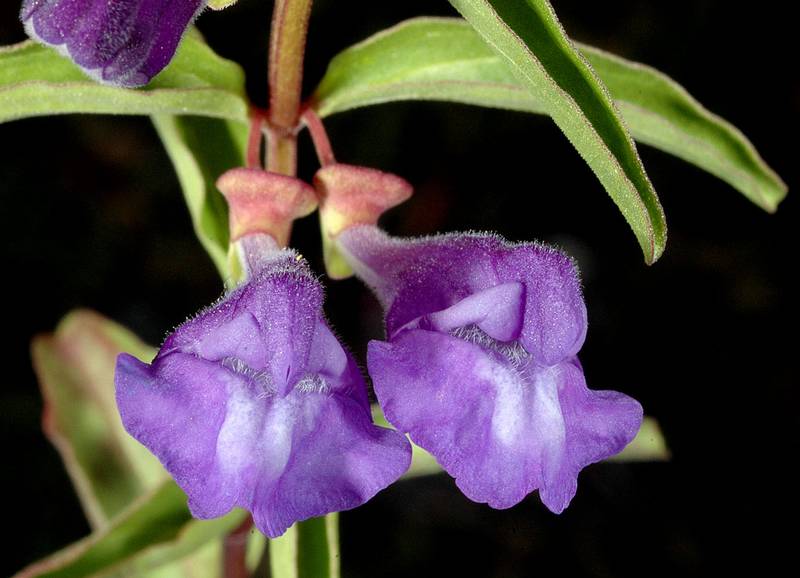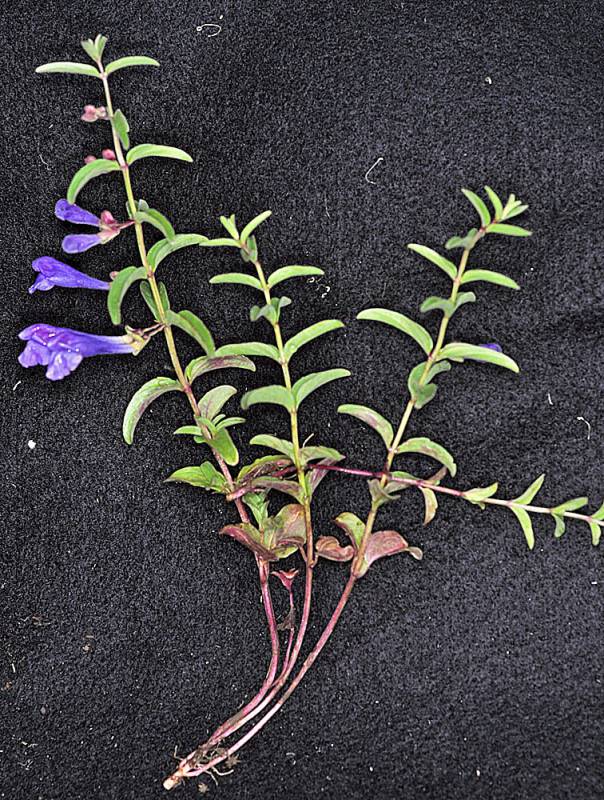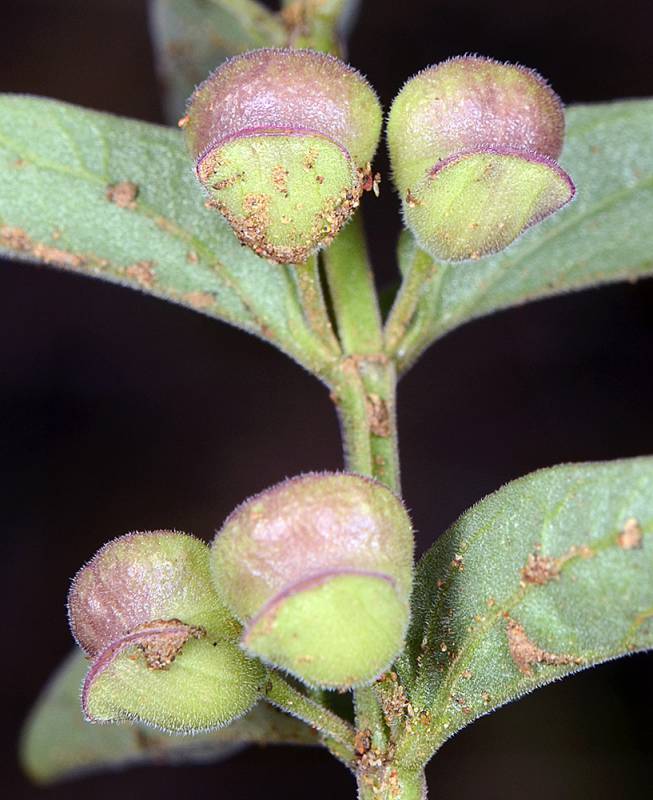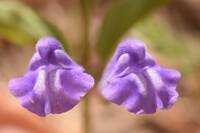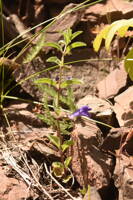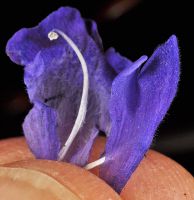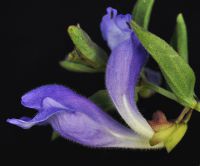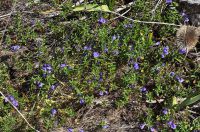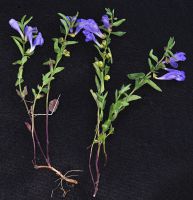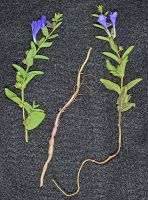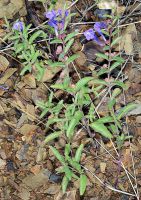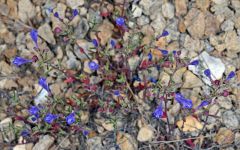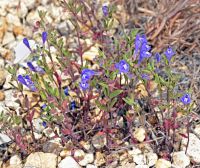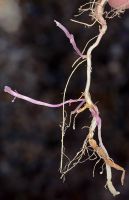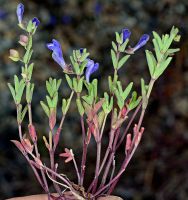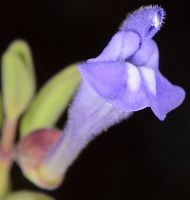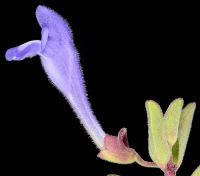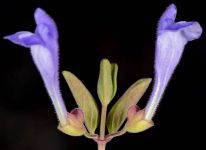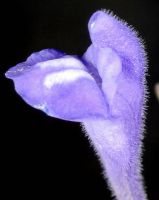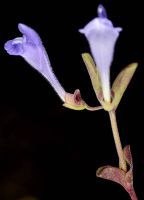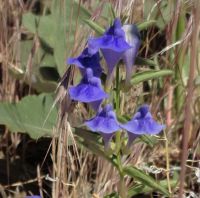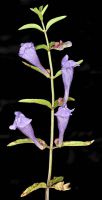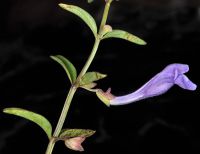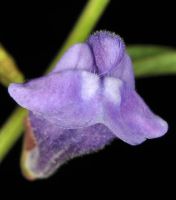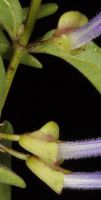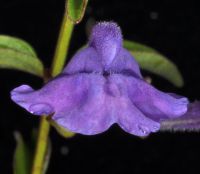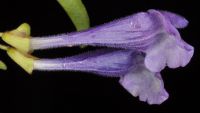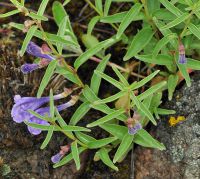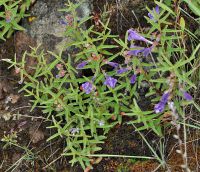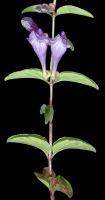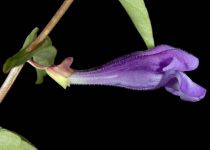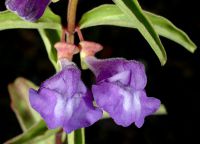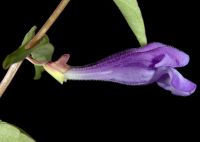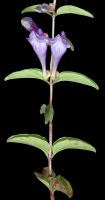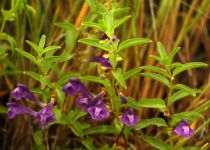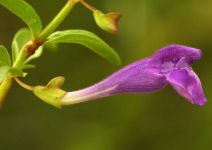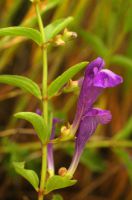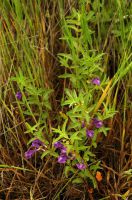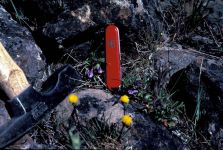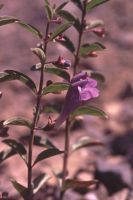Distribution: Occurring east of the Cascades crest in Washington; British Columbia to Oregon, east to Idaho, Utah, and Nevada.
Habitat: Moist and drier sites, moderate to mid-elevations in the mountains.
Flowers: May-July
Origin: Native
Growth Duration: Perennial
Conservation Status: Not of concern
Pollination: Bumblebees, bees, hummingbirds
Perennial herbs from rhizomes, 1-3 dm. tall, the slender, erect stems often clustered or branched from the base, variously pubescent.
Leaves opposite, short-petiolate, the blades entire, 3- to 5-nerved from near the base, lance-elliptic to oblong, 1.5-2.5 cm. long and 3-10 mm. wide, rounded at the apex.
Flowers solitary in the axils of slightly reduced leaves; calyx two-lipped, the upper lip with a prominent transverse appendage, 3.5-5.5 mm. long; corolla two-lipped, deep blue-violet, 2.4-2.8 cm. long, with open throat, the upper lip hood-like, the lower 3-lobed, spreading, the center lobe large and wide, the lateral lobes attached to the upper lip; stamens 4, the lower pair longer than the upper and with one of the pollen sacs abortive; style 2-parted; ovary 2-celled, superior.
Nutlets 4
Publication: Fl. Amer. Sept. (Pursh) 2: 412. 1813.
-
ssp. angustifolia – narrow-leaved skullcap
 Occurring east of the Cascades crest in Washington; British Columbia to Oregon, east to Idaho, Utah, and Nevada.
Occurring east of the Cascades crest in Washington; British Columbia to Oregon, east to Idaho, Utah, and Nevada. -
ssp. micrantha – small-flowering narrow-leaved skullcap
 Occurring east of the Cascades crest in Washington, where disjunct; northeastern Oregon to northern Nevada, east to Idaho and Utah.
Occurring east of the Cascades crest in Washington, where disjunct; northeastern Oregon to northern Nevada, east to Idaho and Utah.
PNW Herbaria: Specimen records of Scutellaria angustifolia in the Consortium of Pacific Northwest Herbaria database
WA Flora Checklist: Scutellaria angustifolia checklist entry
OregonFlora: Scutellaria angustifolia information
E-Flora BC: Scutellaria angustifolia atlas page
CalPhotos: Scutellaria angustifolia photos

